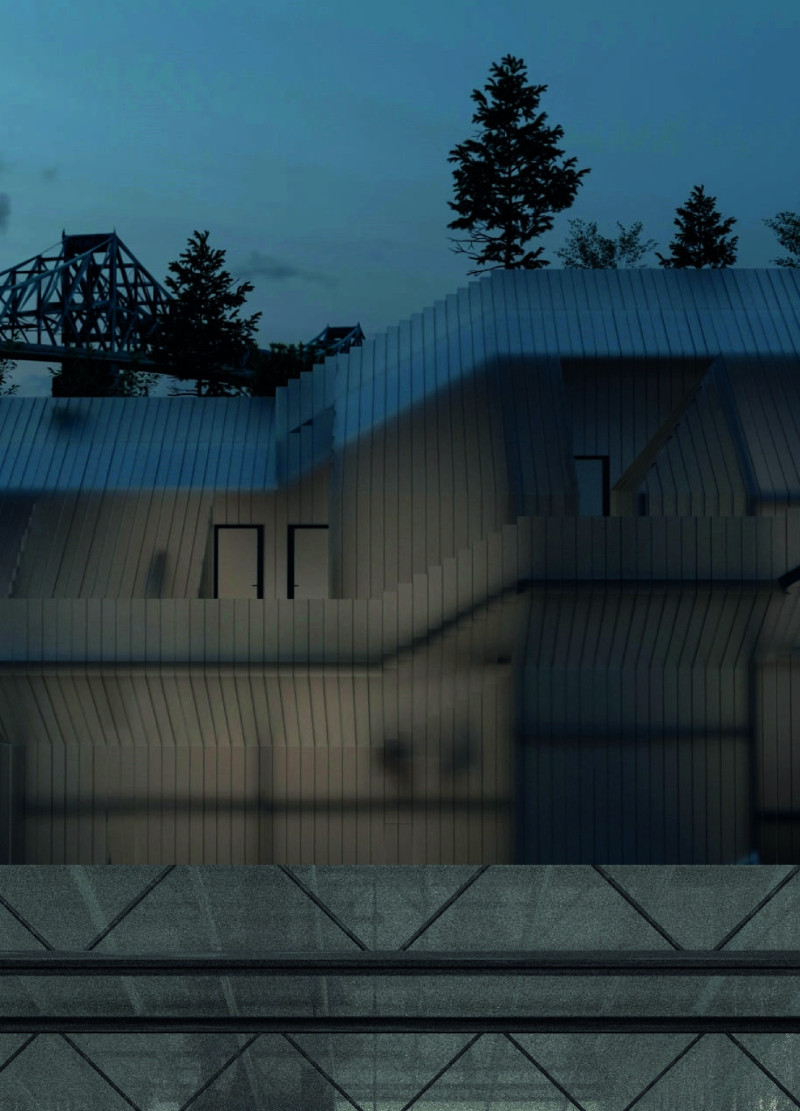5 key facts about this project
This project is designed to serve as a multi-purpose facility, catering to various community activities and events. The spatial arrangement facilitates flexibility in usage, making it suitable for gatherings, workshops, and educational programs. By integrating these functions into a cohesive architectural language, the design promotes interaction among users, enhancing community ties and fostering collaboration.
One of the notable characteristics of this architectural design is its meticulous attention to materiality. The project employs a diverse range of materials that are not only locally sourced but also reflect the region’s heritage. Concrete provides structural integrity and longevity, while steel elements offer support and visual lightness that complements the solid nature of the concrete. Expanses of glass are thoughtfully integrated to enhance natural lighting and provide unobstructed views of the surrounding landscape, establishing a stronger connection between the interior and exterior environments.
Furthermore, wood accents are strategically used throughout the design, contributing warmth and texture that soften the overall aesthetic. This careful combination of materials highlights the architecture’s commitment to sustainability and ecological sensitivity. The use of local stone is another vital aspect, grounding the project in its geographical context and paying homage to traditional building practices.
The spatial organization within the structure is designed to optimize flow and accessibility. The layout features open common areas that encourage collaboration, while private spaces are clear and functional. Natural light floods through large, strategically placed windows and skylights, creating inviting spaces that enhance the user experience. This attention to light not only benefits the aesthetics but also improves the building’s energy efficiency, as passive solar design principles are clearly at play.
Unique to this architectural design is its approach to blending indoor and outdoor environments. The integration of landscaped areas, terraces, and shaded patios fosters a seamless transition between built spaces and nature. These outdoor spaces are designed for functionality and leisure, promoting activities like social gatherings, relaxation, and mindfulness, further enhancing the building's overall purpose.
The architecture also incorporates advanced sustainability techniques, which include rainwater harvesting systems and energy-efficient appliances, reducing the building's ecological footprint. This commitment to green design principles positions the project as a model for future developments aimed at environmental stewardship.
In summary, this architectural project serves as a multifunctional space that skillfully balances aesthetics, sustainability, and community engagement. Each design element has been meticulously considered to reflect both practicality and culture, resulting in a building that stands as a testament to thoughtful design principles. As you delve deeper into the project presentation, you will find detailed architectural plans, sections, and design ideas that encapsulate the essence of this thoughtfully crafted space. Exploring these elements will provide valuable insights into the vision and execution of this architectural endeavor.























